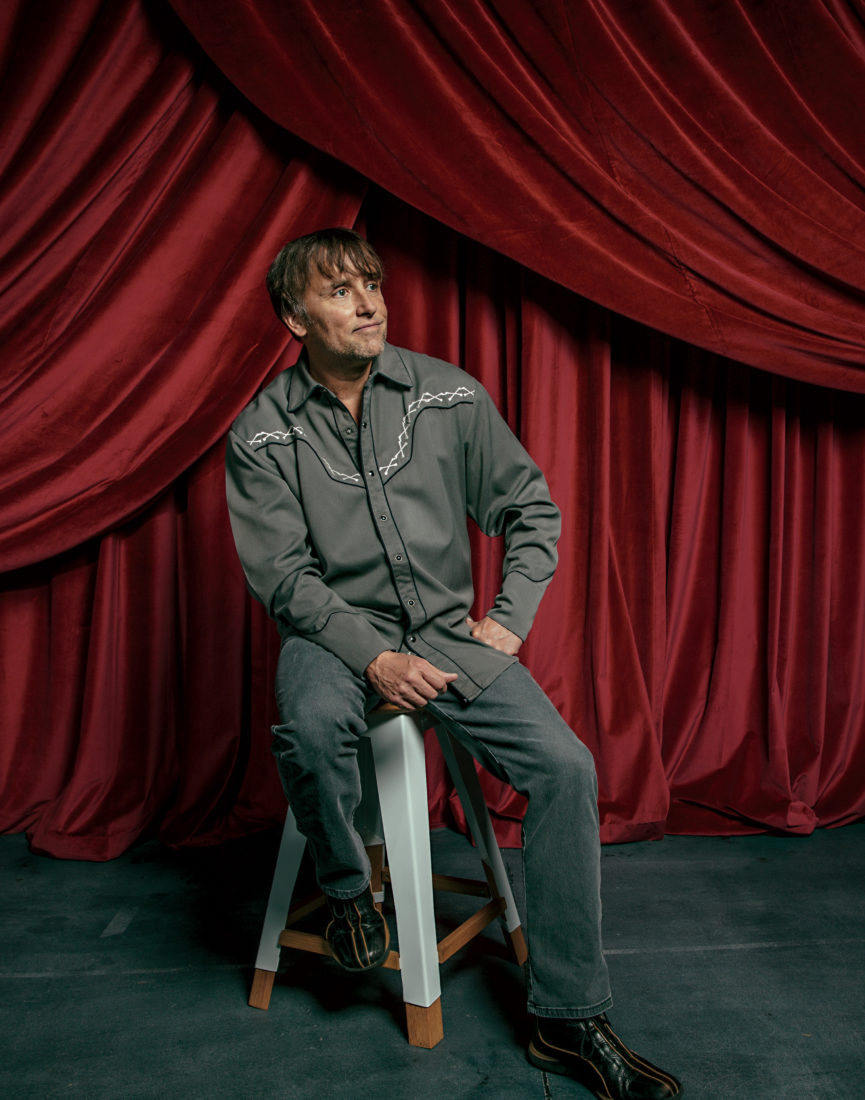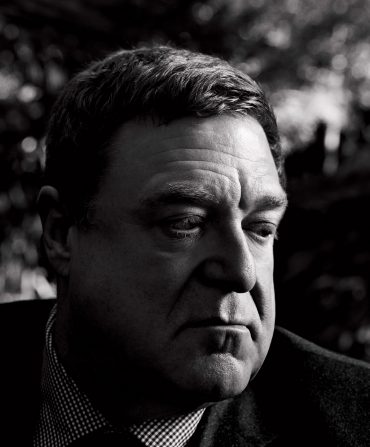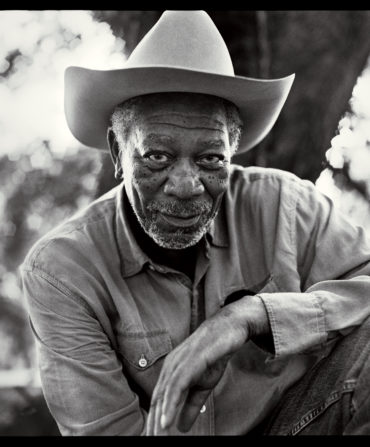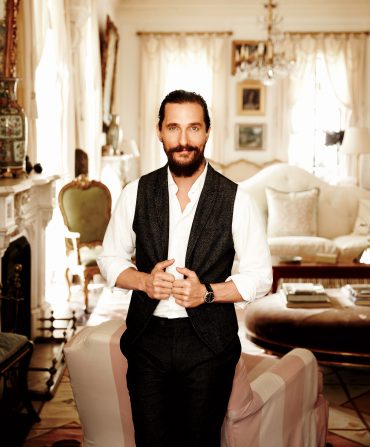Over the last few decades, Richard Linklater has become as much of an Austin, Texas, institution as live music and barbecue. While he’s best known for his locally produced films, from his groundbreaking 1991 debut, Slacker, to 2014’s Oscar-nominated Boyhood, to last year’s Everybody Wants Some!!, the fifty-seven-year-old writer-director’s greatest legacy just might be leading the town’s evolution into one of the country’s leading film scenes—an effort that has culminated in the opening of his film society’s own art-house movie theater.
Called the AFS Cinema (after the Austin Film Society, a nonprofit Linklater started in 1985 to promote filmmaking in his adopted hometown), the space has two theaters, a gala room, a lounge-like lobby, and a collection of Linklater’s movie art. The venue opened at the end of May with a weeklong series of Texas-based films—Tender Mercies, Rio Bravo, The Last Picture Show—and moving forward will not only show independent fare from around the world but also act as a showcase for local and regional filmmakers. “That’s what we’re here for,” Linklater says with a shrug—a characteristically low-key utterance that belies the depths of his ambition.
This new cinema is your dream realized.
When we started the Austin Film Society, it was just me and roommates who all were film freaks, and everybody contributed how they could. We were showing movies at old theaters around town, long-gone places. Then in the late eighties we had a space above Quackenbush’s coffee shop [across from the University of Texas]. But we weren’t really ready at that point because it was like being in business, dealing with sales taxes and paperwork. So we went back to moving around town, until we got access to this decommissioned theater a few years ago. Now we’ve built it into a real home.
You grew up mostly in a small East Texas town and came to Austin when you got interested in film. What was the scene like?
There was a big music scene, and a literary scene to a degree, but film had never been harnessed. When we started showing films—things that weren’t showing anywhere else—they were always sold out. It was like, Wow, people really want to see alternative cinema. It’s been a joy these last thirty years to see it become a real film town.
How does Austin differ from California or New York?
It’s just a bunch of people who love movies. It’s that simple. The [Hollywood] atmosphere is “Yeah, I love movies,” but also “What’s in it for me?” The town is enveloped in the commerce of today, and Austin is wonderfully devoid of that. When you’re in the lobby talking about the film afterward, no one is talking about “I have a meeting tomorrow at so-and-so.”
Instead, people can linger and connect.
They design these theaters now and there’s no lobby—or there’s a lobby but it’s just a traffic stop where you get a snack. Here, our crowd likes to hang out before and after, talk about the movie, talk about other things.
And check out your personal movie-poster collection—including a giant Saul Bass stunner for the 1957 film Saint Joan.
I’m happy to be sharing it with the public. I’m like, Okay, I’ve been staring at that for fifteen years—time to let others see it. I’ve seen Martin Scorsese’s collection in his office, and it’s jaw-dropping, but it’s no more square footage than what I’ve got just here in my studio.
Your original artwork is also in the lobby.
I’ve always dabbled—mostly painting and working with wood—and I’m actually doing more of it these days. Middle-age therapy, maybe? The piece in the lobby is on loan from the permanent collection of the Museum of the Moving Image in New York.
What else do you like to do in Austin?
I was recently wandering the grounds in and around the Laguna Gloria museum and Mayfield Park—always a low-key, wondrous adventure. My daughters and I go there and count how many peacocks we end up seeing.
You have a property out in Bastrop, Texas, not far from Austin but a world away. What do you love about being out there?
The woods mostly. They remind me of East Texas, but it’s a very different kind of people. Bastrop’s always had weird cults and things. People around the country ask me, “Is everyone out there crazy?” I say, “You know, these are my neighbors. They’re actually really friendly!” The first time I went out there, it was to an ashram that a buddy’s parents were living on. I was like, Ohh, I like it out here.
What makes Texas especially cinematic?
Here in Central Texas, you drive west, you get the desert; youdrive east, you get the woods; you’ve got water, you’ve got urban environments, you’ve got country. So you can hit a lot of notes. But there’s also the history of Westerns to draw from, and there’s something about the Southern storytelling tradition—you can name the writers, like Larry McMurtry. Storytelling is real to our history. At the same time, what is a Texas movie? When I was starting out, everything had to be regional, had to hit the stereotypes of country. I was always in opposition to that. When I did Slacker, I didn’t own cowboy hats or boots. I was like, That’s not me.
A theme in your films, from Dazed and Confused to School of Rock to Boyhood, seems to be following your dreams.
I do keep coming back to that. I’m interested in people forging their realities. I look up and go, I’m living in the world I visualized a long time ago. From making movies, to the Film Society, to just being in a film world. It’s a life that I wanted to inhabit. I think everyone has the opportunity to do that in this world—it’s just, are you gonna work for it, and how much does it mean to you?








